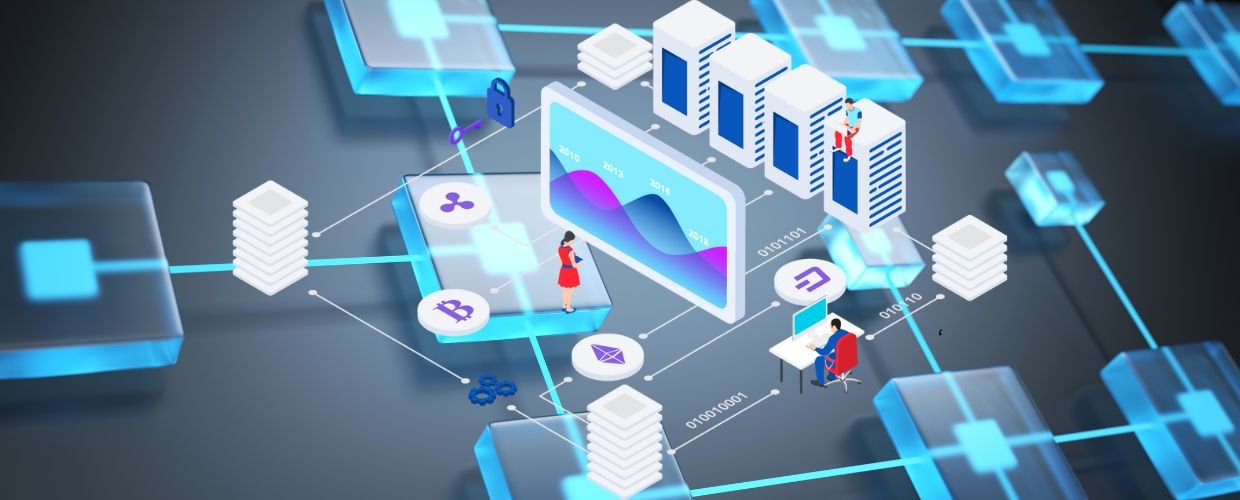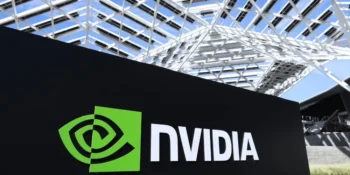Initially designed for cryptocurrencies like Bitcoin, blockchain technology has evolved into a revolutionary tool for businesses across various industries. Its decentralized and transparent nature offers unparalleled security and efficiency, making it a game-changer for many sectors.
Guide to Harness Blockchain Technology
In this step-by-step guide, we’ll explore how you can harness blockchain technology to transform and streamline your business operations.
Identify Business Challenges and Objectives
Before diving into blockchain implementation, pinpoint the specific challenges and objectives you aim to achieve for your business. Whether it’s enhancing supply chain transparency, improving data security, or reducing transaction costs, having clear goals will guide your blockchain technology strategy.
Start by comprehensively assessing your business operations and identifying pain points or inefficiencies. Talk to key stakeholders to gather insights into their needs and pain points. Once you’ve identified the challenges, prioritize them based on their impact on your business and the potential for blockchain to address them.
Understand Blockchain Fundamentals
Familiarize yourself and your team with the fundamentals of blockchain technology. Understand key concepts like distributed ledgers, consensus mechanisms, and smart contracts. This foundational knowledge will be crucial for making informed decisions throughout the implementation process.
Blockchain operates on the principle of decentralization, meaning that data is distributed across a network of computers (nodes) rather than stored in a centralized location. Transactions are recorded in a chronological and immutable manner, ensuring transparency and security. Consensus mechanisms like Proof of Work (PoW) or Proof of Stake (PoS) validate transactions, while smart contracts are self-executing contracts with predefined rules.
Choose the Right Blockchain Platform
Selecting the appropriate blockchain platform is a pivotal decision. Decide whether a public, private, or consortium blockchain technology aligns with your business needs. Public blockchains are open to all, private blockchains are restricted to authorized participants, and consortium blockchains are shared among multiple organizations. Evaluate platforms like Ethereum, Hyperledger, or Binance Smart Chain based on your requirements.
Choosing the right blockchain technology platform depends on factors such as your industry, scalability needs, data privacy requirements, and your ecosystem of partners. Public blockchain technology offers transparency but may not be suitable for sensitive data. Private and consortium blockchains provide more control over access and data sharing. Consider consulting blockchain experts or engaging with blockchain communities to gain insights into platform selection.
Determine Data Storage and Access Policies
Establish data storage and access policies on your blockchain network. Define who has permission to read, write, and modify data on the blockchain. Ensure sensitive data is protected and encrypted, especially in permissionless blockchains.
Data management is a critical aspect of blockchain implementation. Determine the types of data that will be stored on the blockchain technology and which will be stored off-chain. Assign access controls and permissions based on roles within your organization and any external participants. Ensure that data privacy and security are at the forefront of your policies.
Develop Smart Contracts
Smart contracts are self-executing contracts with predefined rules and conditions. Utilize smart contracts to automate processes, such as payment settlements, supply chain tracking, or legal agreements. Smart contracts not only reduce human errors but also enhance trust among parties.
Developing smart contracts requires expertise in programming languages specific to the blockchain platform you’re using. Ethereum, for example, uses Solidity, while Hyperledger Fabric uses Chaincode. Collaborate with experienced blockchain developers or train your in-house team to create and deploy smart contracts.
Build or Integrate Your Blockchain Network
You can build a blockchain technology network from scratch or use existing solutions depending on your expertise and resources. Building your blockchain offers full customization but requires more development effort. Alternatively, existing blockchain technology platforms can be integrated through APIs or blockchain-as-a-service (BaaS) providers for faster deployment.
Building a blockchain network from scratch is a complex endeavor that involves designing the network architecture, consensus mechanisms, and cryptographic protocols. It also requires a skilled development team and significant time and resources. Integrating existing blockchain solutions, on the other hand, can expedite the implementation process, but it may come with certain limitations in terms of customization.
Ensure Regulatory Compliance
Blockchain’s global nature may expose your business to various regulatory environments. Ensure your blockchain solution complies with relevant laws and regulations, such as GDPR for data privacy or industry-specific guidelines. Consult legal experts to navigate these complexities.
Regulatory compliance is crucial for blockchain implementations, especially in industries like finance, healthcare, and supply chain, which have stringent regulations. Work closely with legal counsel to ensure your blockchain network adheres to data protection and financial and industry-specific regulations. It may involve implementing features like data anonymization and access controls to align with legal requirements.
Secure Your Blockchain Network
Blockchain is lauded for its security but is not immune to threats. Implement robust security measures, including encryption, identity management, and regular security audits. Stay updated on blockchain security best practices to protect your network from vulnerabilities and cyberattacks.
Blockchain security is a multifaceted effort. Implement encryption to secure data both in transit and at rest. Implement identity management systems to authenticate users and entities accessing the blockchain network. Conduct regular security audits and penetration testing to identify vulnerabilities and weaknesses. Consider employing blockchain security experts or partnering with cybersecurity firms to fortify your network.
Train Your Team
Invest in training and upskilling your team. Blockchain technology may be unfamiliar to your workforce, so provide education and resources to bridge the knowledge gap. Empower your team to operate and maintain the blockchain network effectively.
Blockchain education is essential for your team to understand how to use and interact with the technology. Provide training sessions, workshops, and access to online resources to enhance blockchain literacy within your organization. This knowledge will enable your team to make informed decisions and troubleshoot issues effectively.
Test and Iterate
Conduct thorough testing in a controlled environment before deploying your blockchain solution at scale. Identify and rectify any issues, bugs, or performance bottlenecks. Continuously iterate and improve your blockchain implementation based on feedback and evolving business needs.
Testing is a critical phase of blockchain technology implementation. Perform unit testing, integration testing, and end-to-end testing to validate the functionality and reliability of your blockchain network. Create a test environment that mirrors the production environment to simulate real-world scenarios. Engage with users and stakeholders to gather feedback and make necessary adjustments.
Implement Governance Mechanisms
Establish governance mechanisms for your blockchain network. Define roles and responsibilities, decision-making processes, and dispute resolution procedures. Clear governance ensures the smooth operation of the blockchain and resolves conflicts efficiently.
Blockchain governance involves creating rules and procedures for managing the network, upgrading, and addressing conflicts. Define roles such as network administrators, validators, and auditors. Establish a clear decision-making process for protocol upgrades or blockchain rule changes. Implement dispute resolution mechanisms to handle disagreements among network participants.
Network Expansion and Collaboration
Consider collaboration with other businesses, partners, or consortia to expand the reach and utility of your blockchain network. Collaborative blockchain initiatives can unlock new opportunities and create industry-wide standards.
Blockchain networks can achieve even greater value when interoperating with other networks and ecosystems. Explore partnerships and collaborations with organizations that share similar goals or use cases. Join industry consortia or standards bodies to contribute to developing interoperable blockchain solutions.
Monitor and Analyze Data
Regularly monitor your blockchain network’s performance and data transactions. Utilize analytics tools to gain insights from the data recorded on the blockchain. These insights can inform strategic decisions and process improvements.
Monitoring and analyzing blockchain data is crucial for optimizing network performance and identifying trends. Implement monitoring tools that provide real-time visibility into the health of your blockchain network. Analyze transaction data to identify bottlenecks, inefficiencies, or opportunities for optimization. Use data analytics to gain valuable insights for decision-making and process enhancement.
Stay Informed About Blockchain Developments
Blockchain technology is continuously evolving. Stay informed about the latest developments, trends, and innovations in the blockchain space. Attend conferences, join blockchain communities, and network with experts to keep your implementation current.
The blockchain landscape is dynamic, with ongoing research and development in scalability, interoperability, and consensus mechanisms. Stay connected with the blockchain community through conferences, forums, and industry events. Engage with blockchain experts to gain insights into emerging technologies and trends that can further enhance your blockchain implementation.
Conclusion
Blockchain technology can revolutionize businesses’ operations by enhancing security, transparency, and efficiency. By following this step-by-step guide, you can systematically harness the power of blockchain for your organization. Successful blockchain implementation requires a clear understanding of your business objectives, careful planning, and ongoing commitment to security and compliance. With the right strategy and execution, blockchain can become a cornerstone of your business’s digital transformation, opening doors to new opportunities and competitive advantages in the rapidly changing business landscape.










